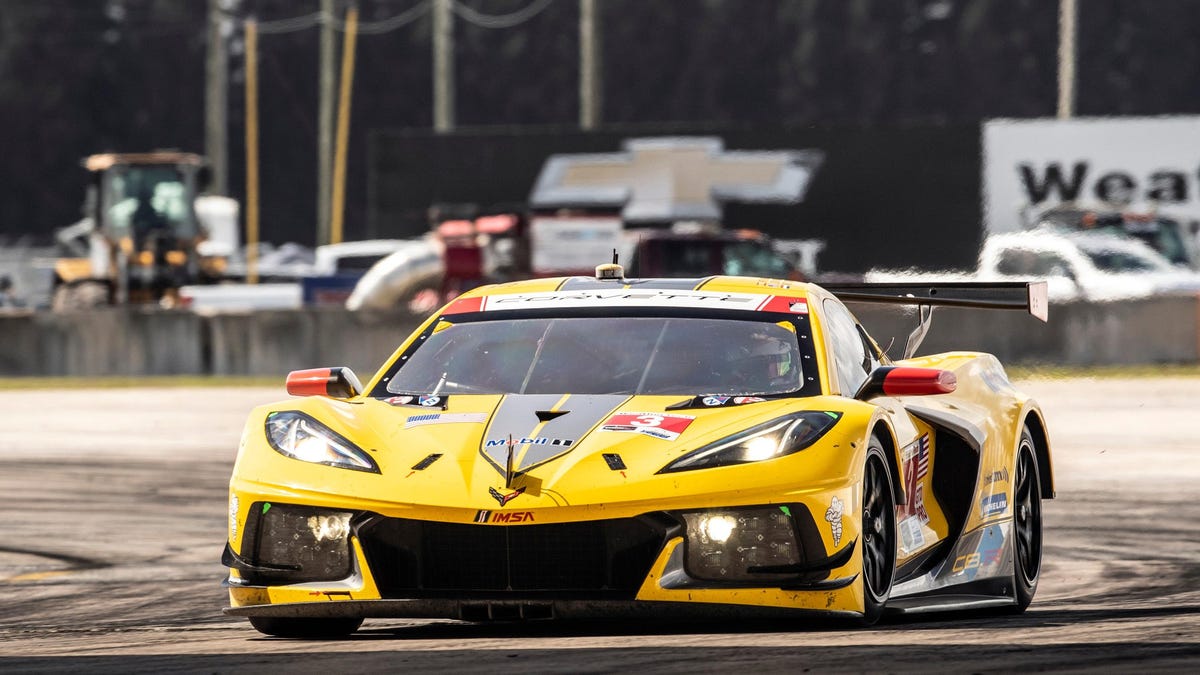The Corvette C8.R Is Only A Little Faster In GTE Spec Than It Is In GT3

Image: Corvette Racing
In case you were busy doing other things this weekend and didn’t pay attention to racing, there were a couple of big races happening down in Sebring, Florida. Super Sebring weekend consisted of the opening round of the FIA WEC on Friday, called the 1000 Miles of Sebring, and the second round of the IMSA championship on Saturday, known as the 12 Hours of Sebring. Down in the GT ranks, there was only one car that was eligible to compete in both races, albeit running two different specifications, the Corvette C8.R.
For a little backstory here, the Corvette C8.R was built to GTE class specifications, and debuted in 2020. That meant the car was eligible to compete in the FIA’s GTE Pro category and IMSA’s GTLM class. For the 2022 season, however, IMSA killed off the GTLM class in favor of a pros-only version of its existing GTD class, which runs to GT3 specifications, called GTD Pro. GTE Pro soldiers on in FIA competition, but Corvette still wanted to race in IMSA, so it lobbied the series to allow it to run a detuned version of the C8.R GTE car in GTD Pro. Being that the GTD-spec car just debuted this year, there hasn’t been an opportunity to compare the two cars until this weekend. Same weekend, same track, similar weather conditions, and two different specifications of the same car. How do they compare?
Image: Corvette Racing
There is no better comparison than the almighty lap time. It’s obvious from the outset that the GTE Pro car would be faster around a lap of the Sebring International Raceway, but just how much faster wasn’t yet clear. It looks like the answer is around two and a half seconds.
During Thursday’s qualifying session for the WEC race, the GTE Pro Corvette ran a 1:57.696 lap time, which was good enough for third on the grid, just under half a second shy of the pole-sitting Porsche. During the race the very same Corvette managed a best timed lap of 1:57.734. While it was slower than the Porsches in qualifying, it actually managed the fastest in-race lap time of the class.
On Friday’s qualifying session for the IMSA-sanctioned 12 Hour race, the GTD Pro classed Corvette C8.R grabbed third in class with a 1:59.957. The race went very well for the Corvette crew, with the yellow #3 winning the race after 12 hours of running, and setting a 2:01.413 lap time in the process. Team driver Nicky Catsburg set that time, which was only good enough for the fourth fastest lap of GTD Pro.
Generally speaking, GTE-spec cars offer a lot more downforce and a little less power than GT3 cars. To convert the Corvette to GTD, the Pratt and Miller team was also allowed to fit driver aids like ABS, but was forced to run a revamped aero package and less-restricted V8 engine. There is also a difference in the tires and the fuel that is used in IMSA versus what is used under FIA control. GT3 continues to get faster every year, and for the most part GTE development is finished. Consider, if you will, that the GTD pole time for the Sebring race held in 2014 was 2:04.258.
So what does all this mean? Well, to me at least, it means GTE is dead and GT3 is the future. It probably means the same to Chevrolet, as the company is building a new-spec C8-based GT3 racer for 2024. It also means that to the FIA as well, because that series is killing the GTE category in favor of a GT3-based specification in 2024, though has hinted recently that it could make the change in 2023 if the demand is there.
I, for one, welcome our new GT3 overlords. Of course, I called for the immediate death of GTE nearly two years ago, so of course I’d say that.







